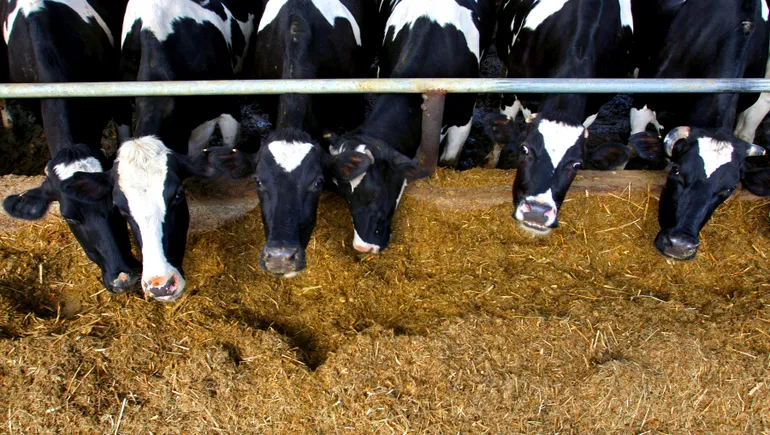Dairy farmers urged to beef up biosecurity amid bird flu concerns

State and federal officials are urging cattle operators to beef up their biosecurity as researchers run diagnostics and genome sequencing to better understand why highly pathogenic avian influenza, also known as bird flu, is infecting dairy livestock at several farms.
“What we have seen in dairy cattle in Texas appears to be the same H5N1 strain in wild birds,” Erin Robinson, director of communications at the Texas Animal Health Commission, told Agriculture Dive on Wednesday. “While we aren’t 100% sure how this is transmitted to dairy cattle, it is something of note to mention.”
Since the first cases were reported early last week, the U.S. Department of Agriculture has confirmed the detection of avian influenza in dairy herds in Texas (7), Kansas (2), Michigan (1), New Mexico (1) and Idaho (1), as of April 2. The agency created a page that is being updated with the latest cases here.
State and federal health officials have determined avian influenza reached dairy herds via infected wild birds, but they cannot rule out the possibility of cow-to-cow transmission as the virus spreads. This incident marks the first time the flu was found in cows.
According to the USDA, there is no concern of avian influenza getting into the nation’s milk supply due to regulatory practices and pasteurization, which would kill the virus. The public health risk remains low, federal and state officials said.
While there are no federal quarantine orders in place for infected cattle, some states are issuing commerce restrictions. This week, Nebraska reported it will require producers who are importing breeder female dairy cattle to obtain a state permit prior to entry. The USDA is encouraging strong diligence by stakeholders to ensure only healthy cattle are moving across state lines.
One of the biggest questions researchers are working on is why certain cattle are more susceptible to the virus than others. Currently, older dairy cows are more likely to test positive and exhibit avian influenza symptoms, while young and mid-lactation cattle are less likely to contract the disease, Robinson said. There also have been no confirmed reports of the virus in cattle raised for beef.
“We don’t have an answer for” why the virus spreads to certain animals over others “but we are looking into the specifics,” Robinson said.
Robinson urged dairy farmers to be proactive in reporting when they start to see bird flu symptoms in their cattle and to follow enhanced biosecurity measures, such as limiting the number of people on their operations and housing their animals separately by species.
“Farmers practice biosecurity on a day-to-day basis, but there may be enhanced biosecurity plans that many have and hope not to have to use,” Robinson said. “Now would be a good time to start implementing those. And if they don’t have those, creating those habits or implementing those practices is simple.”
She recommended producers to follow guidance from the Secure Milk Supply, a collaborative federal, state and university-led project funded by the USDA. There are manuals, checklists, forms, posters and other resources available online to help enhance livestock biosecurity plans.
As the virus emerges in dairy cows, the USDA also published guidance for animal health officials, veterinarians and producers to follow. The agency recommended farmers monitor their dairy herds closely for decreased milk production, reduced appetite, fever or thickened discolored milk.
Other recommendations include minimal movement of cattle and for persons working with or around cows suspected or confirmed to be infected with bird flu to wear personal protective equipment. A person tested positive for avian influenza after presumed contact with dairy cattle in Texas, state health officials confirmed earlier this week.
Compared to when bird flu is detected in commercial and backyard poultry, the protocols for cattle are currently less severe.Typically, birds that test positive for the virus are killed. Earlier this week, egg producer Cal-Maine temporarily said it ceased production at its Parmer County, Texas facility due to avian influenza, resulting in the organized killing of nearly 2 million birds.
As researchers learn more about the H5N1 strain infecting cattle, the livestock are being isolated from their herds, treated for their illness and in many cases are recovering, Robinson said.
“There has been little to no mortality reported in animals that have been affected,” she said.
The USDA’s National Veterinary Services Laboratories are working on presumptive positive tests from Kansas, New Mexico, Ohio and Texas.
Source: fooddive.com

